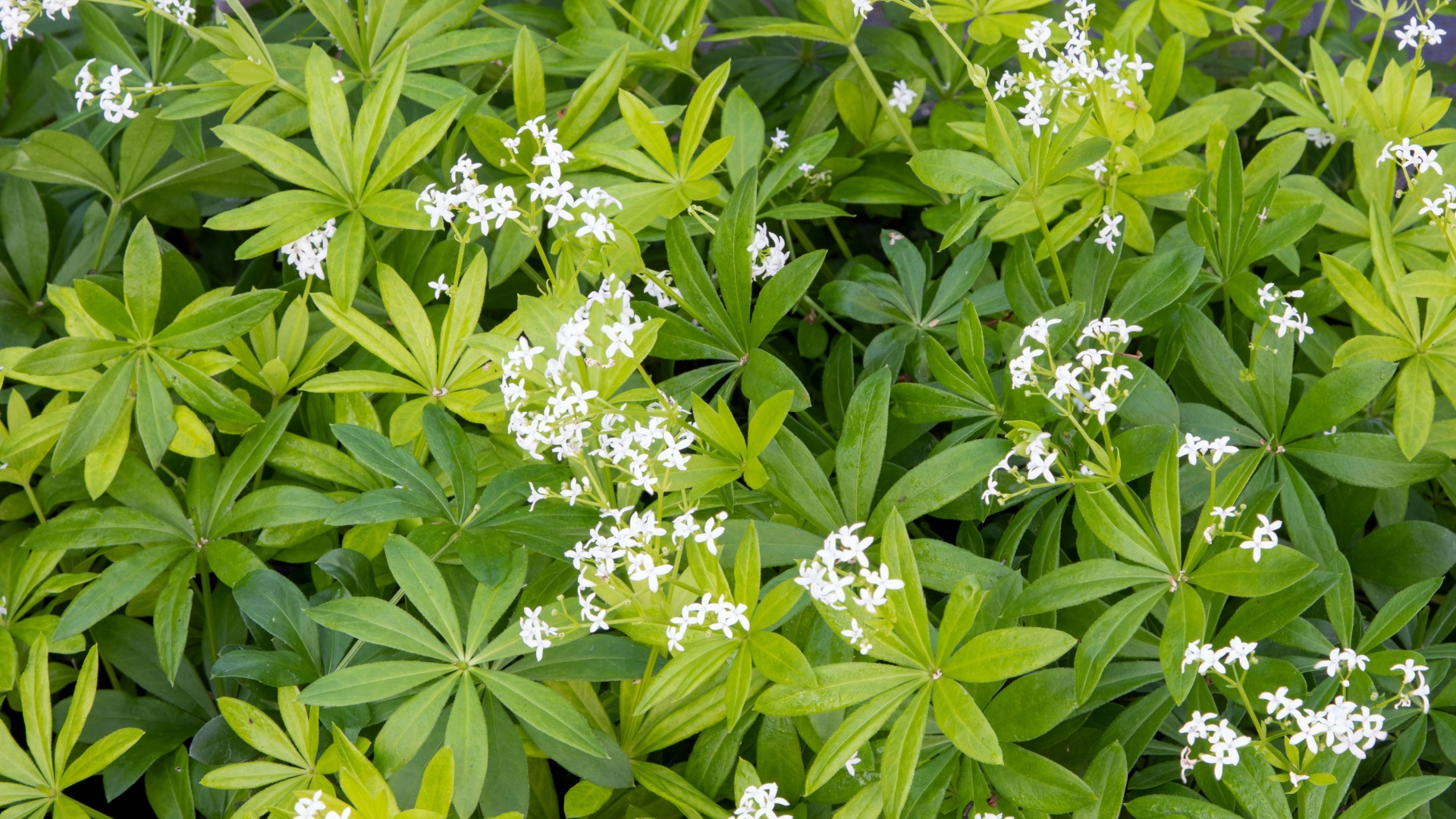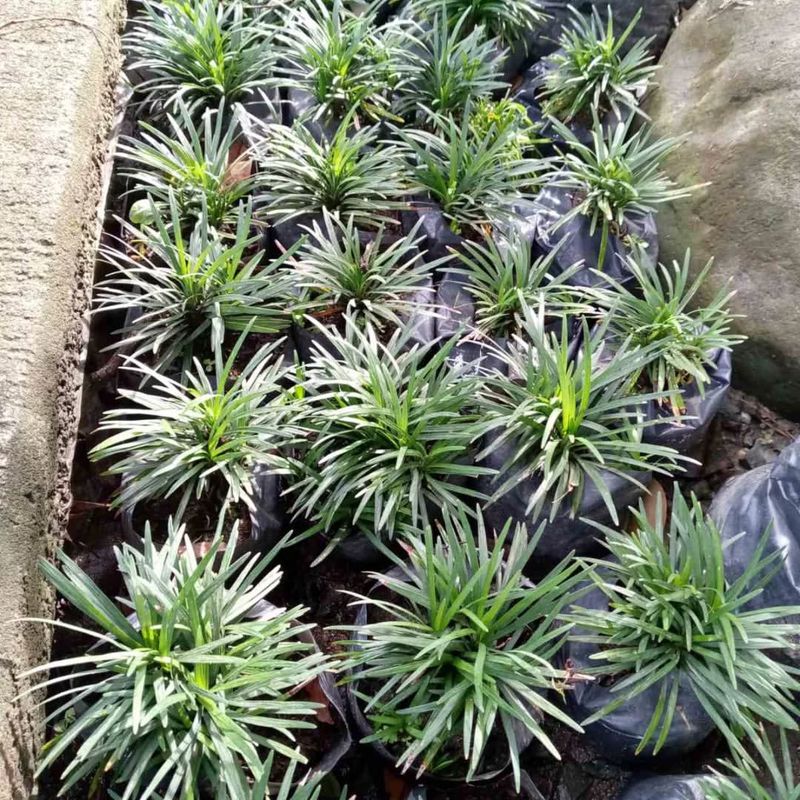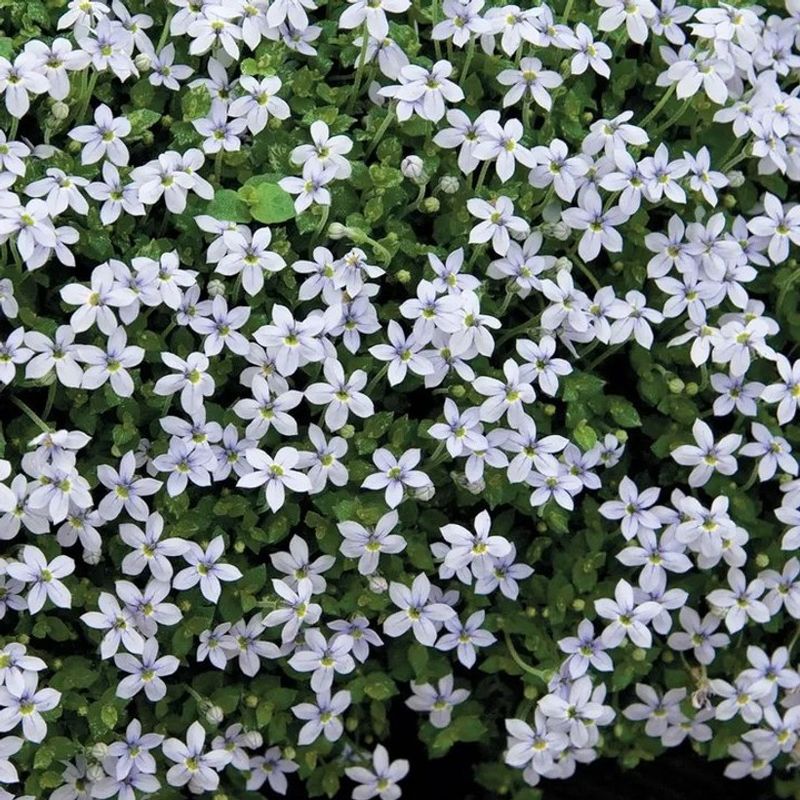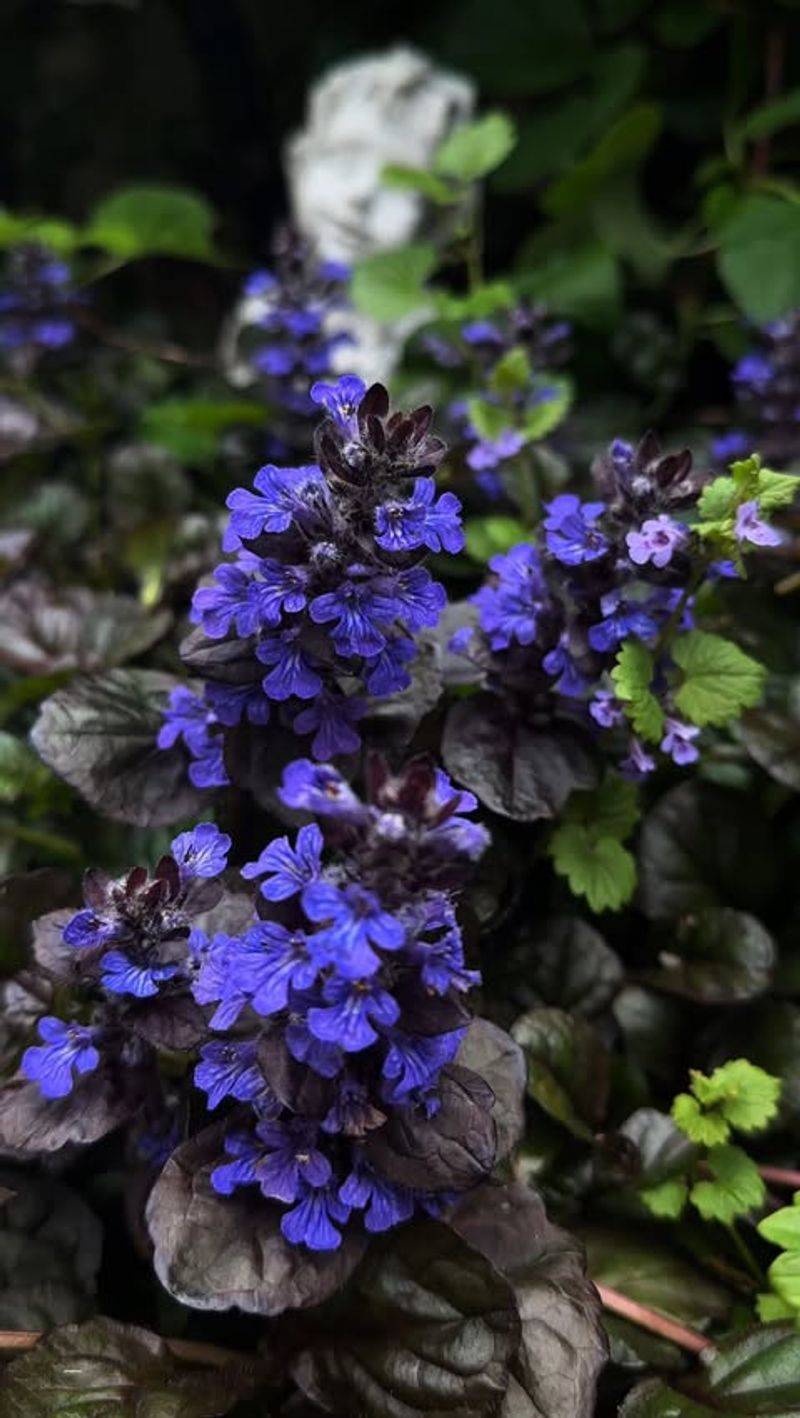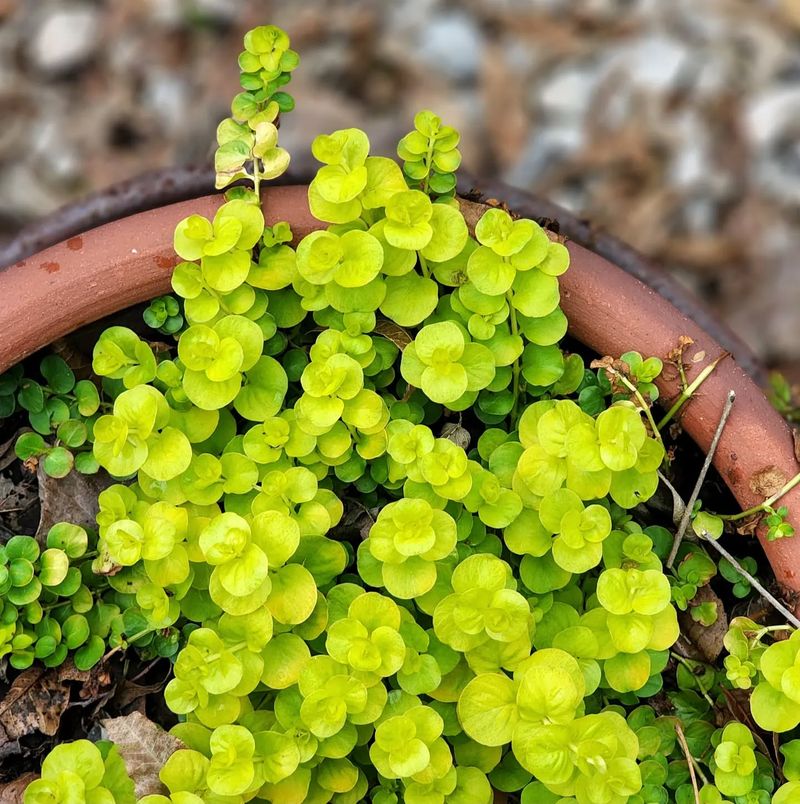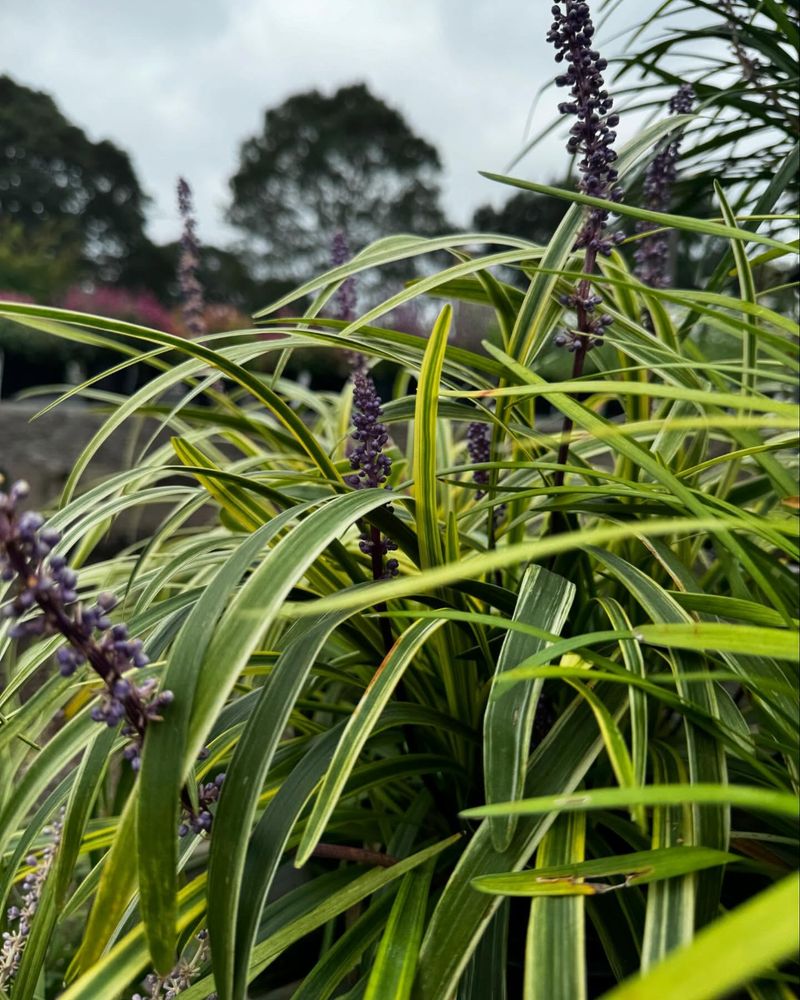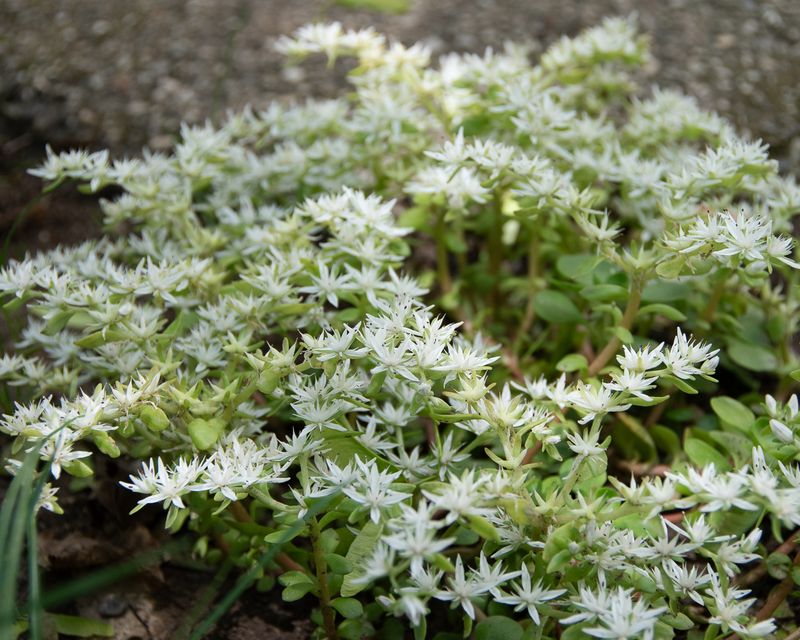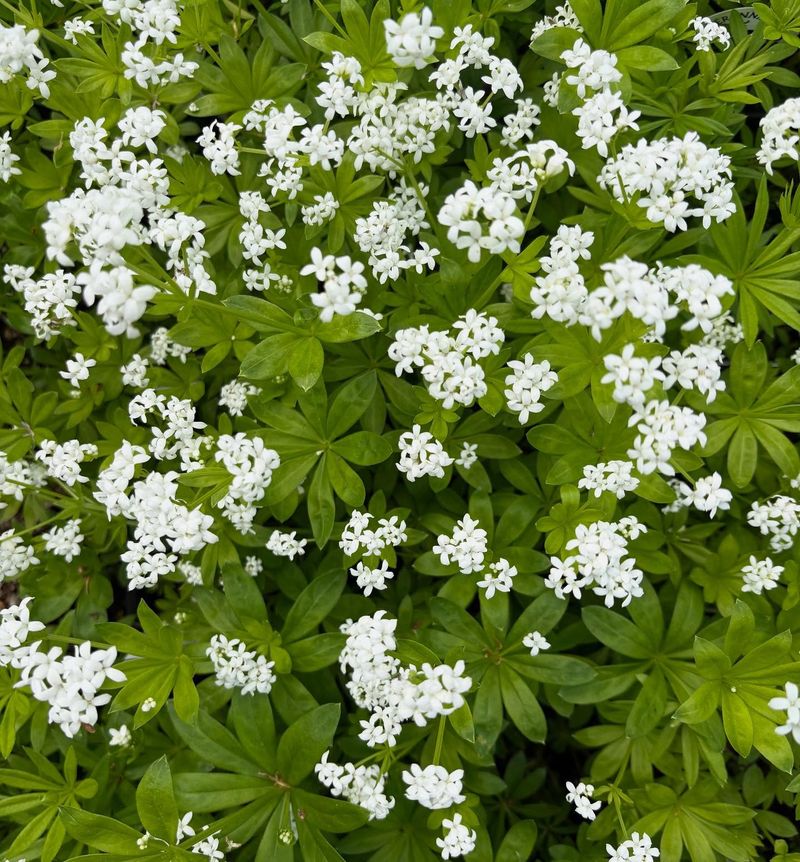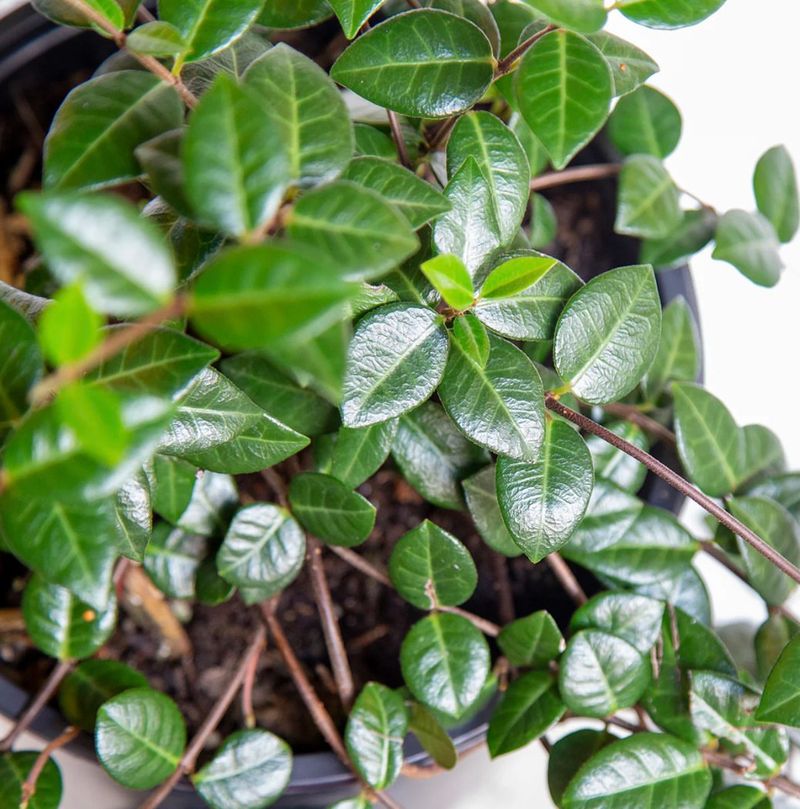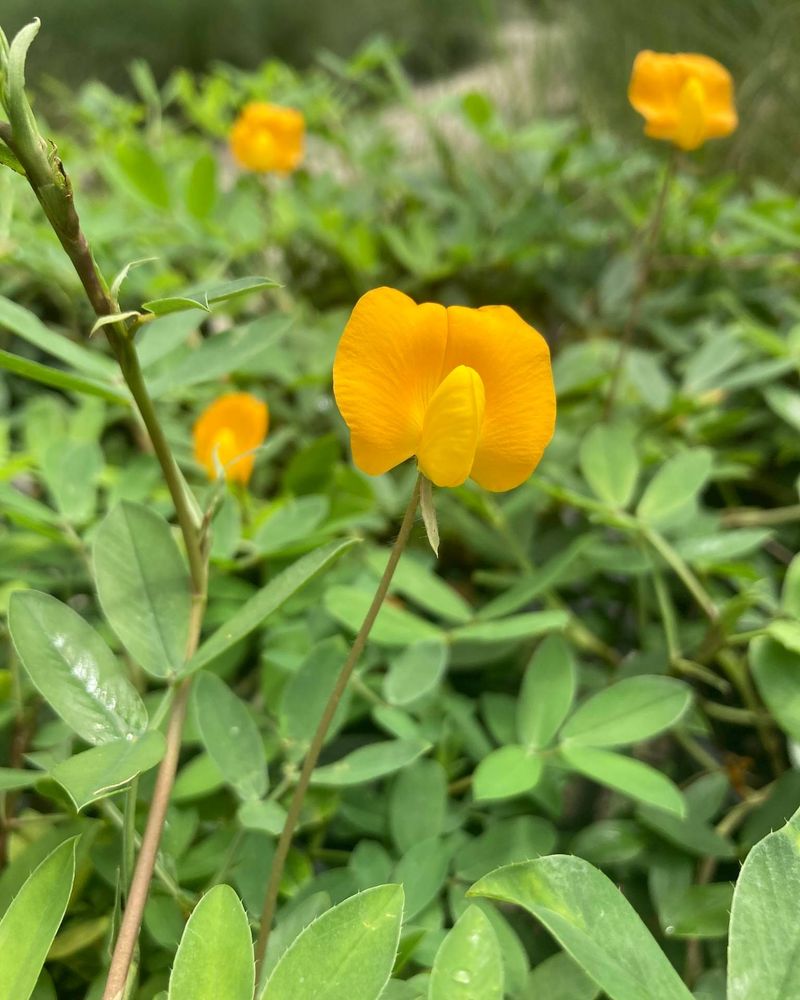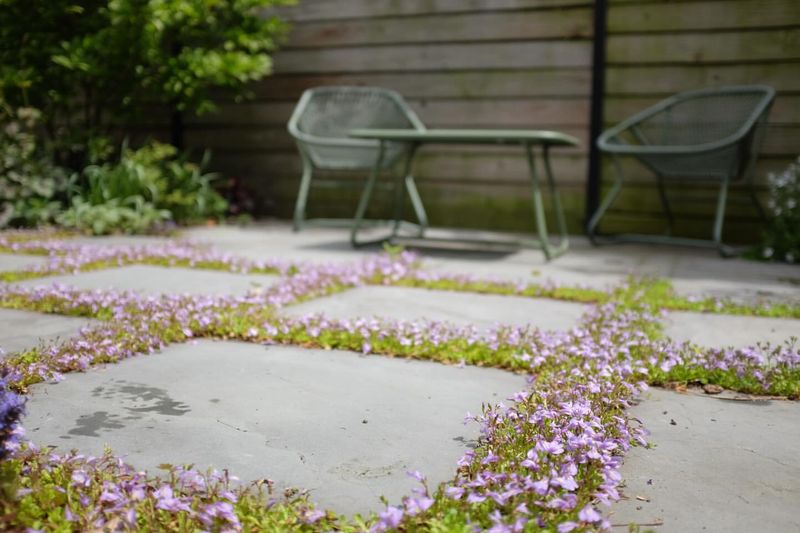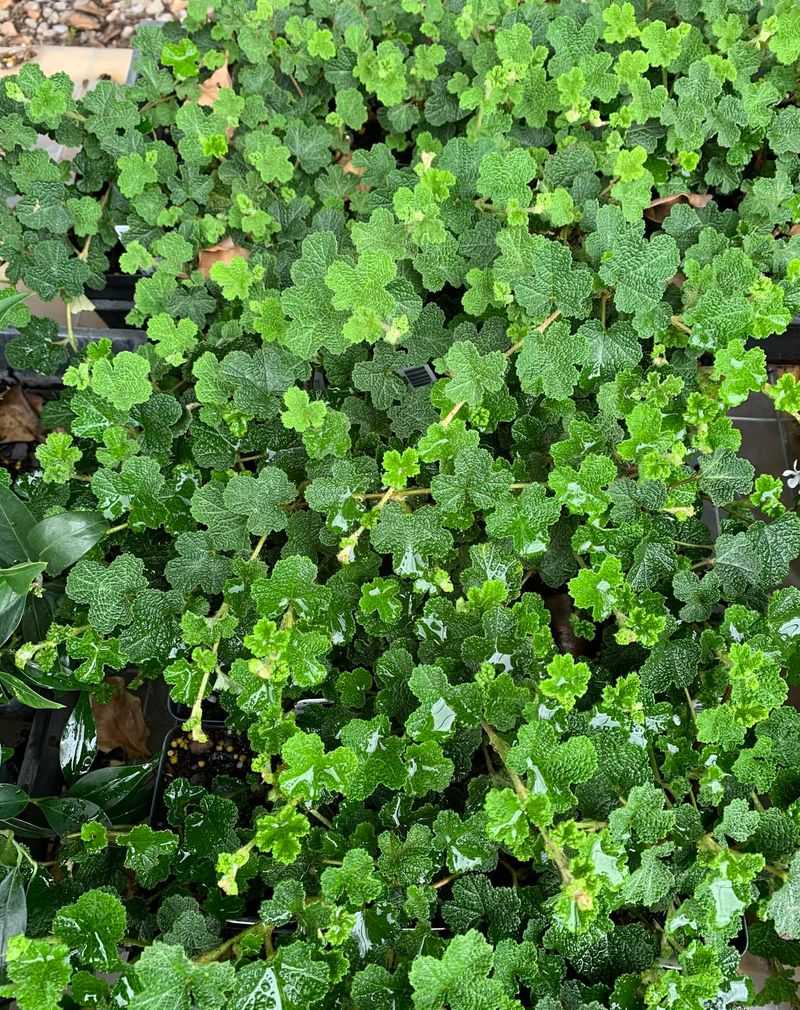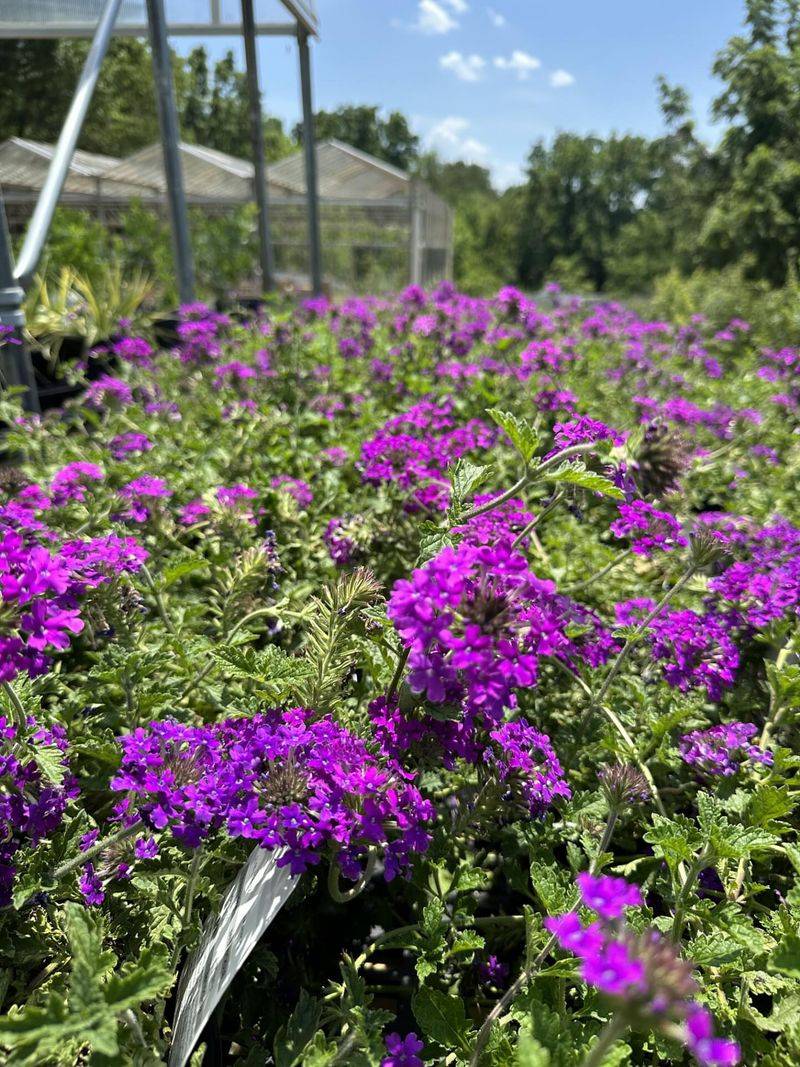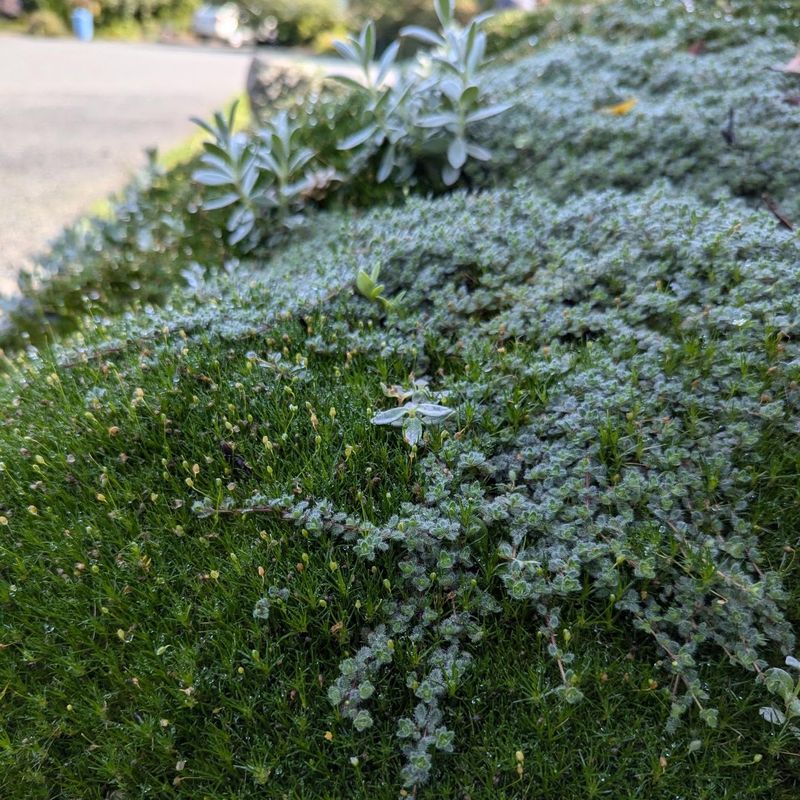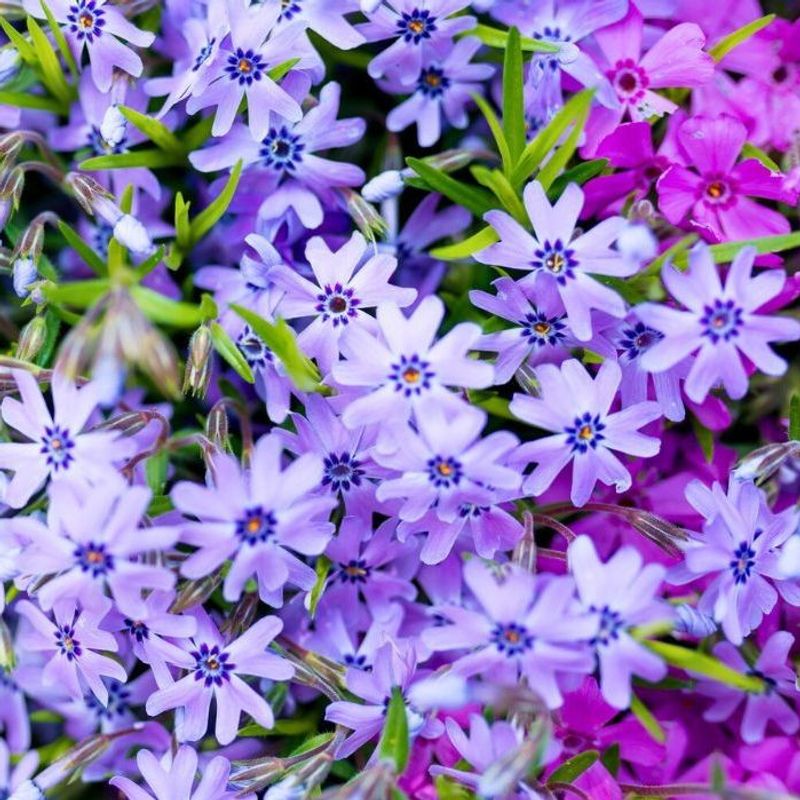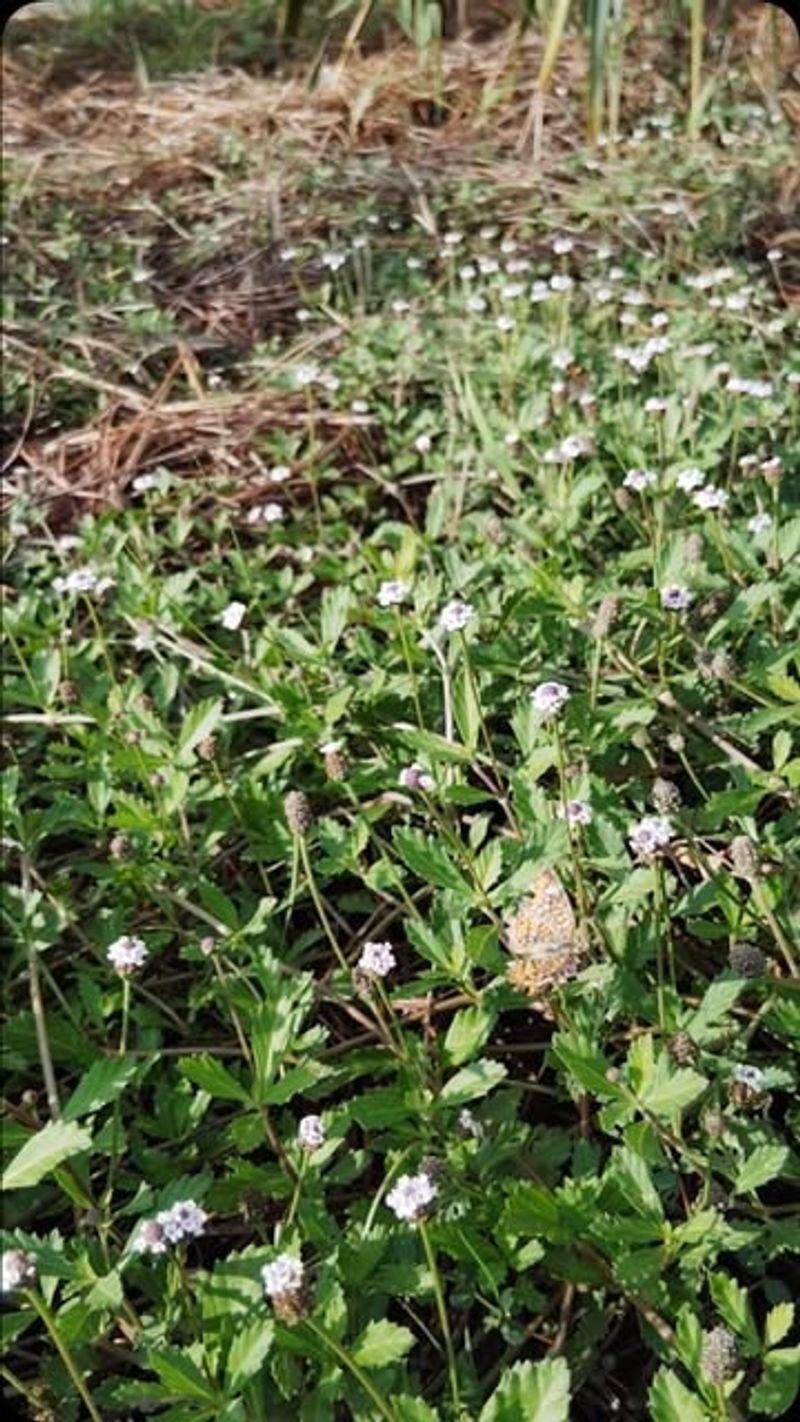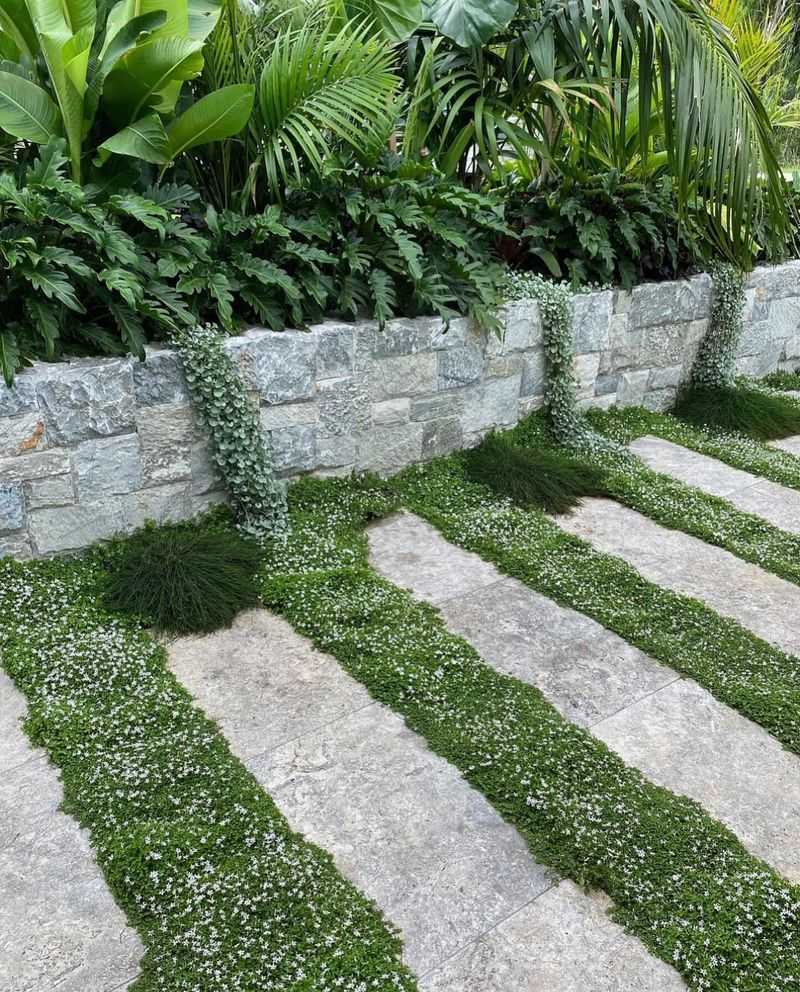Weeds love August in South Carolina—but you can outsmart them with the right ground cover. Instead of fighting bare soil and constant sprouting, fill those trouble spots with tough, spreading plants that do the work for you.
These ground covers thrive in the heat, block weeds naturally, and keep your yard looking polished without all the pulling and spraying.
1. Creeping Thyme
Fragrant and tough, creeping thyme forms a dense mat that weeds simply can’t penetrate. The tiny purple flowers attract butterflies and bees during August bloom time. This low-growing herb thrives in South Carolina’s sandy soils and tolerates foot traffic remarkably well.
Once established, it requires minimal watering, making it perfect for drought-prone areas in your yard.
2. Dwarf Mondo Grass
Hardy and virtually indestructible, dwarf mondo grass creates tidy, dark green tufts that spread slowly but surely. Standing just 2-4 inches tall, it maintains its rich color throughout South Carolina’s sweltering summers.
Plant it between stepping stones or as a lawn alternative in shady spots. Unlike regular grass, mondo requires zero mowing and stays lush with minimal care.
3. Blue Star Creeper
Delicate blue flowers dot this fast-growing ground cover throughout summer, creating a dreamy carpet effect. Despite its dainty appearance, blue star creeper is remarkably tough in South Carolina conditions. The tiny leaves form a dense mat that chokes out weeds effectively.
Perfect between stepping stones or as a lawn substitute, it handles light foot traffic without complaint and stays under 2 inches tall.
4. Ajuga (Bugleweed)
Bold purple-blue flower spikes rise above glossy foliage in this shade-loving ground cover. Ajuga’s dense growth habit smothers weeds while its colorful leaves add year-round interest to South Carolina gardens.
Available in varieties with bronze, chocolate, or variegated foliage, it spreads quickly in moist areas. Morning sun with afternoon shade keeps it looking its best during August’s intense heat.
5. Creeping Jenny
Chartreuse coins of foliage brighten shady spots while spreading rapidly to form weed-suppressing mats. Creeping Jenny flows beautifully over retaining walls or between stepping stones. Particularly happy in South Carolina’s moist areas, this ground cover can even handle the edges of water features.
During August’s heat, keep it watered for best performance, especially in sunnier locations where it might scorch.
6. Liriope (Monkey Grass)
Graceful arching leaves and purple flower spikes make liriope both functional and ornamental. Extremely heat-tolerant, it thrives in South Carolina’s August temperatures when other plants struggle. Use it to edge garden beds or fill large areas where grass won’t grow.
The evergreen foliage stays attractive year-round, and its deep roots make it nearly impossible for weeds to establish.
7. Sedum (Stonecrop)
Succulent leaves store water, making sedum incredibly drought-resistant for South Carolina’s dry August spells. Low-growing varieties form tight mats that leave no room for weeds to take hold.
The fleshy foliage comes in shades of green, blue, and red, often changing color with the seasons. Many varieties produce star-shaped flowers that attract butterflies and pollinators to your garden.
8. Sweet Woodruff
Whorls of fragrant green leaves create a lush carpet in shady spots where other plants struggle. Sweet woodruff’s white spring flowers give way to attractive foliage that persists through August. Medieval gardeners prized this herb for its vanilla-hay scent when dried.
In South Carolina gardens, it performs best in woodland settings with rich, moist soil and protection from afternoon sun.
9. Asiatic Jasmine
Glossy evergreen leaves form an impenetrable mat that weeds simply cannot penetrate. Asiatic jasmine handles South Carolina’s heat with remarkable resilience, maintaining its fresh appearance through August’s dog days.
Not actually a true jasmine, this vigorous vine stays low when regularly trimmed. It tolerates everything from full sun to deep shade, making it perfect for difficult slopes or areas where grass fails.
10. Perennial Peanut
Yellow flowers resembling tiny peanut blossoms dot this drought-tolerant ground cover throughout summer. Perennial peanut forms a dense, weed-suppressing mat while fixing nitrogen in the soil. Perfect for sunny spots in South Carolina gardens, it withstands heat beautifully and requires almost no maintenance once established.
Unlike actual peanuts, this ornamental relative produces no edible nuts but offers similar soil benefits.
11. Mazus
Tiny purple-blue flowers cover this low-growing spreader in spring, with sporadic blooms continuing through August. Mazus forms a dense carpet just 2 inches tall that effectively crowds out weeds. The small, scalloped leaves create an attractive texture even when not in bloom.
Particularly well-suited to South Carolina’s climate, mazus tolerates both humidity and occasional drought once established.
12. Creeping Raspberry
Evergreen leaves with crimson stems create year-round interest in this native ground cover. Small white flowers in spring give way to edible raspberry-like fruits by August. Unlike its thorny cousins, creeping raspberry remains gentle to the touch.
The dense growth pattern effectively eliminates weeds while its shallow roots prevent erosion on South Carolina’s sloped landscapes.
13. Verbena ‘Homestead Purple’
Vibrant purple flower clusters cover this heat-loving ground cover from spring through fall. Homestead Purple verbena creates a stunning carpet of color that peaks during August in South Carolina gardens. Butterflies flock to the nectar-rich blooms while the spreading habit chokes out weeds.
Plant in full sun for best flowering, and trim back occasionally to encourage fresh growth and more blossoms.
14. Woolly Thyme
Soft, fuzzy foliage creates a silvery-green carpet that’s irresistible to touch. Woolly thyme thrives in South Carolina’s hot, sunny spots where other plants might struggle. Unlike its culinary cousins, this thyme variety is grown primarily for its unique texture and drought tolerance.
The dense growth habit effectively smothers weeds while requiring almost no maintenance once established.
15. Creeping Phlox
Spring brings a riot of pink, purple, or white flowers, but creeping phlox’s dense evergreen foliage fights weeds year-round. By August, the needle-like leaves form a tight mat that’s virtually impenetrable to unwanted plants.
Native to the eastern United States, it’s perfectly adapted to South Carolina conditions. Plant along sunny borders or let it cascade over retaining walls for dramatic effect.
16. Frogfruit (Phyla nodiflora)
Native to South Carolina, frogfruit offers tiny white flowers that pollinators adore throughout summer. This low-growing native spreads quickly to form a dense mat that effectively suppresses weeds. Extremely heat and drought tolerant once established, it even handles occasional foot traffic.
The small rounded leaves stay close to the ground, creating a living mulch that protects soil while using minimal water.
17. Dichondra ‘Silver Falls’
Cascades of silvery coin-shaped leaves create a striking waterfall effect in containers or on slopes. This heat-loving ground cover spreads quickly during South Carolina summers, effectively smothering weeds in its path.
The metallic sheen reflects sunlight, helping the plant stay cool even in August heat. Though typically grown as an annual in cooler regions, Silver Falls often performs as a perennial in South Carolina’s milder climate.

